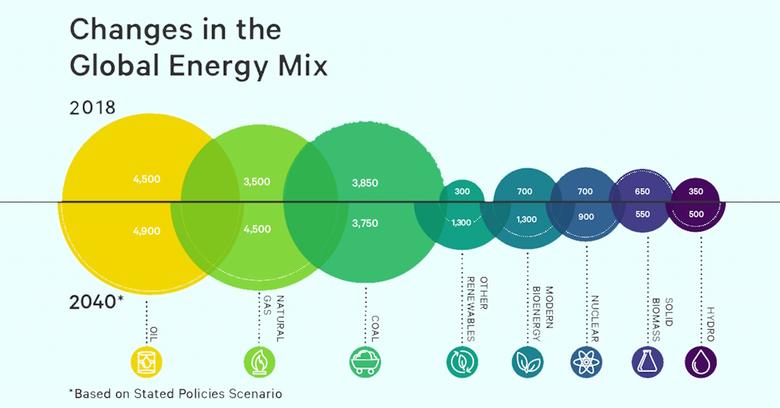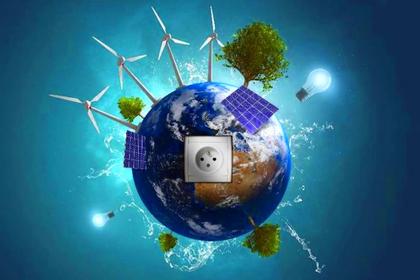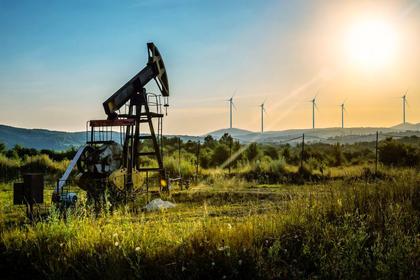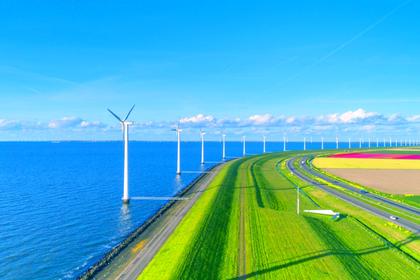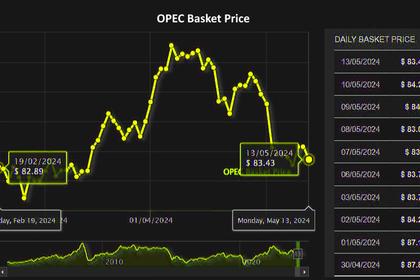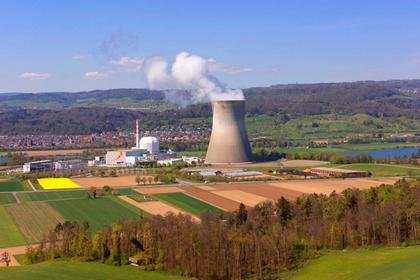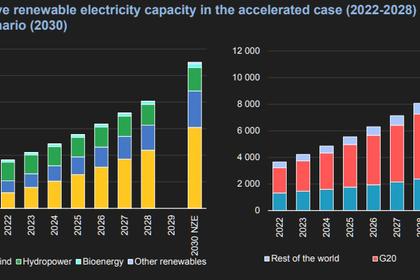Although the demand for fossil fuels is set to remain high the risk of restricting the global temperature to 1.50C not only worsens climate impact with record breaking heat and undermining the security of the energy system. Everyone realizes that costs of inaction will be enormous as even with clean technologies in place the global emissions is likely to remain high enough to push it to 2.40C this century.
In view of this, the key factors of importance are as follows: tripling global renewable capacity; doubling rate of energy efficiency improvements; reducing methane emissions; innovative large-scale financing to triple clean energy; and finally, orderly decline in the fossil fuel usage. While it is not a uniform code for the globe, every country has to outline its own pathway with international co-operation towards accelerating clean energy transition. The rate at which emissions decline depends on our ability to finance sustainable solutions to meet the growing demand for energy.
World Energy Outlook indicates that renewables are set to contribute 80% of new power generation under current policy settings with solar alone accounting for a greater share of this expansion. It is estimated that by the end of this decade, more than 1200 GW of solar per year is a possibility. If the world wishes to reach 800 GW of new solar by the end of the decade, a lead of 20% reduction in coal generation should happen in China in 2030. Similarly, it would be a quarter lower in Latin America, Africa, Southeast Asia, and the Middle East for coal and natural gas.
RENEWABLE ENERGY:
In the light of electricity demand slated to grow by 3% a year lays a greater burden on the renewable which is estimated to meet 35% of global power generation by 2025. This rapid rise in renewable also accounts for that much lesser carbon emissions. More than 70% of the expected renewable will be from China, Southeast Asia, and India while the advanced economies are attempting to reduce reliance on fossil fuels especially in the heating and transportation sectors. Renewables share is set to rise from 29% to 35% by 2025 reflecting a fall in coal and gas generation and consequent dip in carbon emissions.
The existing policies and market trend hints at 7300 GW of global renewable capacity by 2028 which is 2.5 times the current level by 2030. This falls under...
- Policy uncertainties and delayed policy responses to macro-economic environment
- Insufficient investment in grid structure
- Administrative barriers/permitting procedures and social acceptance
- Insufficient finance in emerging and developing economies.
It is pertinent here to consider the progressive renewable status for a longer period than the immediate decade end i.e. 2050. International Renewable Energy Agency emphasizes the investments and technologies needed to decarbonize the energy system. It is imperative that regional and country-level ambitions will be crucial to meet interlinked energy and climate objectives. Despite the challenge before the world, comprehensive policies is believed to tackle energy and climate goals coupled with socio-economic challenges in fostering transformative decarbonization.
The major attraction in renewable ruling the next 2-3 decades is that job potential would reach 42 million globally by 2050 (4 times the current level). In addition energy efficiency measures would add another 21 million and system flexibility 15 million. The decarbonization perspective highlights innovative technologies, business models and behavioral adaptation to achieve zero emissions. It further demands intensified international co-operation. The options seem to be attractive starting with flexible power grids, efficiency solutions, electric vehicle charging (EVM), energy storage, interconnected hydropower, green hydrogen, and other technology investments consistent with long term energy and sustainability. Similarly, measures pertaining to socioeconomic measures include industrial policies, labour market interventions, educational, and skill development and social protection. It is these objectives that drive the renewable hoping that governments would work together towards a Global Green Deal recognizing the advantages to ensure a just transition for everyone to pave the way for a clean, low-carbon global economy.
Creating Green New Deal roadmaps for 143 countries to sail through global warming, air pollution and energy insecurity looks attractive. The globe is divided into 24 regions who can work together on grid stability and energy storage solutions matching energy demand and supply between 2050 and 2052. It is strongly believed that it is possible to power the planet entirely by sustainable energy.
The super grid connecting North America, Canada, and Mexico by dividing into 20 interconnected sub-regions based on population, energy demand, area and grid structure could significantly reduce not only storage requirements but also overall cost of energy system. Similar models across different countries depending upon the need will significantly benefit the globe at large. The dramatic transformation of eliminating fossil fuels mainly with wind solar power could not have been possible without the integrated participation of policy makers, investors and many other related organizations.
Despite the challenges and ambitious targets, technology is available for the world to transform into fully sustainable system by 2050. It is evident that renewable will remain on course to outsmart fossil fuels in the future provided urgent action is initiated right away by various key players starting with policy makers.
CHALLENGES AHEAD:
Even though the future looks bright with the advancement in renewables, the most important aspect is how the co-ordination among various players is executed. In fact, we may witness the predominance of renewable (wind and solar) similar to the fossil fuel era gone by. It is just not the coordination within the country that holds the key but international coordination when it comes to the grid sharing and waste management.
ENVIRONMENT:
The way wind and solar harnessing natural elements interact with our environment significantly. Kinetic energy from the wind and sunlight by solar are used to convert into electricity. The very construction of wind turbines and solar panels consume vital resources posing threat to environment. Understandably, wind turbine and solar panels pose waste management problems. More importantly, they impact our wildlife.
Turbines, which are strategically placed either onshore or offshore, and their blades capture the kinetic energy to initially convert into mechanical power and then electricity. The placement of turbines and sites with consistent patterns (6m/sec minimum) play crucial role in the efficient functioning. Solar convert sunlight through photovoltaic cells of the solar panels into electricity and can be on residential rooftops or build large-scale solar farms. Their long life (25-30 years) and quiet operation make it non-disruptive as well.
Wind turbines demand significant amount of steel (335 tons), concrete (1,200 tons), and rare earth metals (2 tons) to build the tower, nacelle, and rotor blades. In addition they require 3 tons of aluminum, zinc, and molybdenum. The extraction and processing of these materials have considerable impact on environment—habitat disruption and pollution from mining. Silicon abundant in the Earth’s crust required for solar panels demands its extraction and purification process that pose environmental problems. Water required in processing poses hazardous waste problem. In addition, silver and indium rare earth metals extraction impact the environment.
The resource consumption between production and operation phases underscores the long-term planning in renewable projects. Technological advance could help reduction in resource consumption
RECYCLING OPTION:
As has been projected, the growing demand for power especially in the transport sector with EVMs being pushed rigorously, it is possible that the globe may witness altogether a different challenge posed by the disposal of used batteries (both storage and transport).
In one of the recent papers, the authors feel that the solar waste in 2050 will be very small compared to other waste that flows—54 to 160 million tons of waste is presumed to be one-tenth of e-waste streams and 99.6% less than coal ash and municipal waste. Similar estimates have also been drawn for wind and the estimated global cumulative turbine waste by 2050 will be around 42 million tons.

It is further elaborated based on unit of electricity production where the results indicate that coal generates 50 times as much as solar, more than 500 times as much as wind and more than 2700 times as much as nuclear (Coal 89 kg followed by solar at 1.67 kg, wind 0.16 kg and 0.03 kg by nuclear). Another exercise on hypothetical cumulative waste generation per person over 25 years recorded are: 12,125 kg Municipal waste; 10739 kg Coal; 1916 kg Plastic; 600 kg E-waste; 201 kg solar; 19 kg wind and 3.69 kg nuclear as per University of Michigan, Clean Technika, World Bank and others.
OPTIONS for the waste:
Wind: It is possible to recycle 80-85% of wind turbine compounds. However, blades made of composite materials primarily fiberglass mixed with carbon fibre and resins is harder to recycle as individual components need be segregated. It is further believed that this being non-hazardous can be sent to landfills with no major health implications. There are research programs underway to make wind turbines recyclable.
Solar: Compared to wind, solar has a range of arsenic, gallium, and germanium and hexavalent chromium as potential toxins. The International Energy Agency flags concern with small amounts of lead in silicon panels and trace amounts of cadmium in DcTe ones as potential human risks.
CONCLUSION:
It looks amply clear that the reservations on the nature of waste generated by the renewables (wind and solar) seem farfetched as not only the quantity but recyclable option makes them a better choice over fossil fuels. However, it is necessary that this circularity is continued at the end of its life.
In the light of damage already inflicted through fossil fuels, we need to focus seriously on the possibility of further reducing the impact of renewables though it looks smaller compared to fossil fuels. We are also not aware of the consequences that may trigger over the next 25-30 years.
-----
This thought leadership article was originally shared as part of the Energy Central Special Issue - Powering the Future: The Road to Electrification - July/Aug 2024. The communities are a place where professionals in the power industry can share, learn and connect in a collaborative environment. Join Energy Central today and learn from others who work in the industry.

